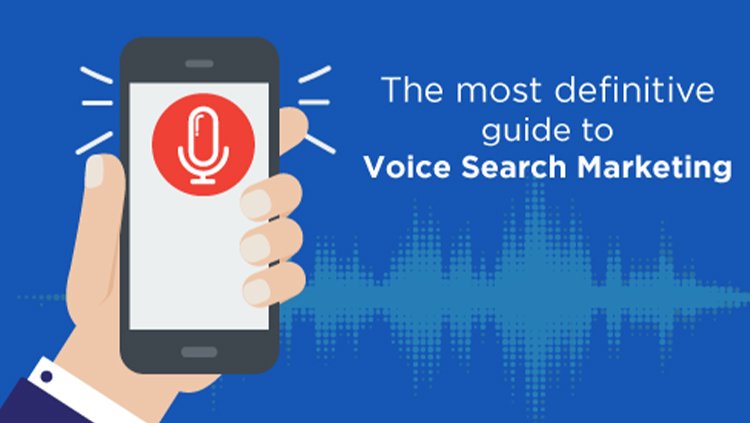India uses voice search twice as much as the rest of the world: Are marketers paying attention?
Experts in media and marketing explain how brands can best optimise video searches and decipher India's voice search algorithm.

Because it is the most popular default search engine and probably everyone's homepage, Google has become a verb. As of November 2022, reports claim that Google had a clear monopoly on the Indian mobile search engine market, holding a share of 99.74 percent. Additionally, the number of voice search queries coming from Indians is twice as high as the global average, and the country also has the highest monthly usage of Google Lens globally, per the company.
The reasons voice (and video) search is so common in India are pretty clear. One of the most people in the world use the internet is in India (soon to be highest). Due to the democratisation of the internet, the majority of new users are from tier 2 and 3 countries and/or were previously ineligible due to socio-economic barriers, which are largely dissolving as data and devices become more affordable.
There are brands that advertise to audiences everywhere. In order to understand how brands can best optimise video searches and decipher the voice search algorithm in India, e4m spoke to media and marketing experts.
Clearly audible
Vivek Kumar Anand, Director of Business and Innovation at DViO Digital, cites two key arguments in favour of brands utilising voice search strategies.
The first is the voice share. When you optimise your website for voice, you appear at the top of Google's search results whether someone is using voice search or text, giving you a higher impression share and voice share. Additionally, a brand can position itself as a thought leader in a given category with the aid of a position zero ranking.
"Unlike audiences with formal education, Generation Z and many other audiences with little to no formal education conduct searches differently. According to Anand, "We are observing a trend where semi-educated audiences with limited writing and reading skills use Google search using voice and generally rely on the position zero result Google tells them a story based on the results of their search.
Therefore, if your target audience includes this group of audiences, it is even more important for the brand to be present there with genuine results. Another audience group is Gen Z, who exclusively use voice for searching, texting, and other tasks. This makes it especially important to have a focused voice strategy from the standpoint of future growth, he continues.
According to Nakul Dutt, National Strategy Director, FoxyMoron, Zoo Media, "Voice and video have become a go-to mechanism to consume the internet because of either convenience and accessibility or joy. Voice, as an example, has been growing by more than 200% YoY. It represents a new India, a new way of using the internet, and is representative of a change in behaviour. The most significant difference between voice search and regular text search is that they are fundamentally the same.
"Users frequently use a more conversational tone when conducting voice searches. Rather than just using keywords, they are more likely to use "phrases." Therefore, the first step is to consider other factors in addition to keywords, which serve as the basis of any advertiser's search strategy, he continues.
For your website and SEO, it is crucial to switch from a keyword-based content approach to a query-based content strategy, according to Dutt. The most crucial real estate is the featured snippets, which are prioritised and read aloud during voice searches. The most crucial factor in acquiring this real estate for an advertiser is website content. Advertisers must take into account the tone as well as linguistic nuances because when people search by voice, they frequently use a more conversational tone, according to him.
Vox Populi
Given that India is a multilingual nation, Swati Kardak, Group Account Manager - Media Planning and Buying, SoCheers, notes that due to the accessibility of native language support, voice search makes it simpler to search for content.
For instance, Google Assistant is currently available in over nine Indian languages, and Alexa is already available in Hindi and English. Therefore, when communicating with the audience, using the proper mix of targeting keywords in the appropriate languages will become crucial. Additionally, the content will need to be continuously optimised in order to increase brand visibility and rank highly in searches, according to the expert.
The voice-activated ordering system at Starbucks and the voice-based chatbot used by KFC to explain menu items and offers are two examples of how streamlining the user experience can result in a significant increase in sales. Therefore, simply comprehending how people use voice search and providing them with creative and useful content can revolutionise the way brands operate.
Vikas Kumar, the founder and CEO of Digital ROI, asserts that from the perspective of local SEO, "Brands can benefit from Voice Search. Local businesses that align their content with natural search queries will be more visible on Google devices, which return results based on the Local SERP features. In reality, Gen Z users are gravitating more and more toward voice search and favouring video content for learning. As a way to engage with their target audiences, brands are presently creating more reels and video content, as you may have noticed.
"Brands that offer personalised voice ads will streamline the workflow in the audio advertising sector and determine the user's intent. Additionally, I think that the impact of voice search will yield useful information about what users are looking for. Personalizing brand messaging and the brand experience will boost user engagement and aid in the development of trust for brands, says Kardak.












